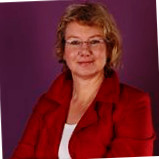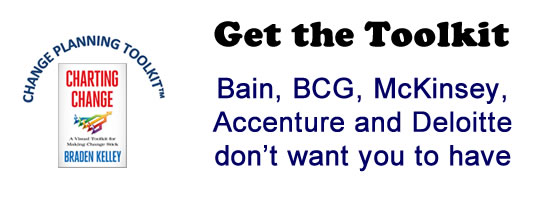To be agile you have to align your organisational structures vertically

I was working for an international jewellery firm. The grandson had called me in to talk about the succession planning in their family business. After a long conversation about some of the dysfunctional dynamics in the family, I asked to see the organisational structure. I soon noticed that over the years friends and family had been given all sorts of jobs all over the place to fit them in. It was a typical organic growth scenario, where the formal structure had become less important then the implicit informal structure, with lots of unclarities around boundaries, roles and tasks. As a consequence everyone was fighting each other.
In the last article we looked at how leadership is like being a D.J. with a boundary mixing panel with three switches, where you open or close boundaries depending on the purpose of the organization and the dynamics in the environment. In this article we will look at the importance of aligning the three structures vertically.
An organization always consists of three structures working at the same time:
- The formal organizational structure
- The informal relational structure
- The cultural imago structure
The challenge comes for leaders aligning the structures.
Leadership in the organizational structure (Level 1) is defined as a role in the organizational hierarchy. This is the domain of what Berne (1964) called the responsible leaders. They lead on the basis of their formal position and the sanction and reward power that are associated with that position. This is supported by the organizational constitution, which describes the purpose, boundaries, tasks and procedures in a group. At this level the task of leadership is to manage the organizational boundaries and processes to fulfil the purpose of the organization. I believe at this level the main focus of leadership should be dealing with three major organizational dilemmas concerning boundaries.
Leadership of the individual structure (Level 2) is defined as the ability to influence others to achieve breakthrough performance. In Berne’s terms this concerns the effective leadership, based on the authority of the person in their role (persona). It is supported by the personal authority of the leader and the laws and regulations governing group dynamics. At this level the focus of leadership is to manage relationships and enhance group cohesion to counteract dysfunctional group dynamics. Cohesion is the need of members to preserve the existence of the group (Berne, 1966). It is the cohesive force, which can counteract the disruptive forces of pressure, agitation and intrigue. When there is not a balance between the disruptive dynamics and the internal cohesion the group becomes a combat or process group, instead of a work group. At this level leadership is focussed on increasing cohesion in a group, which we’ll look at in a later article.
Leadership in the psychodynamic structure (Level 3) concerns the relationship between leaders and members, is determined by the group imago, and based on the implicit script based expectations of both leaders and members. Each of us has learned about leadership and membership in our first experience of group, which is usually our family of origin. This is the domain in which we create our first script beliefs, about leadership and membership. These colour our group imagoes until they are decontaminated and clarified. The leadership focus at this level is on managing the culture and on clarifying the group imago to minimize the archaic influence on actual performance.This is done through a continuous process of decontamination of the leadership-membership relationship.

Maximum structural agility is achieved when the different structures are vertically aligned. In a situation where the formal structure, is not aligned with the informal relational structure, and the cultural needs, conflicts abound. It is only when we align the structures that we can tell what is a consequence of unclarity of boundaries and roles, and what is actually a relational issue.
To be agile you have to move from group to team to tribe…
RATE: Radical Agile Transformation Exercise
- Organizational structure: Describe the boundaries, roles and hierarchy in the formal structure of your organization. Which roles are represented in the leadership? Included in the membership? In the staff ?
- Relational structure: Now check who is in these roles? Are there people fulfilling double roles? Are essential roles not being fulfilled? Did some people just get a made up role for personal reasons?
- Cultural structure: Lastly close your eyes and draw a picture of the organization in your mind. Who is the real leader? Who are the real members? Who is closest or furthest from the leader?
- Now check – are the organizational, relational and cultural structures aligned, or are there discrepancies?
Wait! Before you go…
Choose how you want the latest innovation content delivered to you:
- Daily — RSS Feed — Email — Twitter — Facebook — Linkedin Today
- Weekly — Email Newsletter — Free Magazine — Linkedin Group
 Sari van Poelje has 30 years experience of innovation on the interface of leadership and organizational development, executive coaching and transactional analysis both as a director within several multinationals and as an international consultant. Specialization in creating agile leadership teams and business innovation! She is the author of numerous articles and books on leadership and change.
Sari van Poelje has 30 years experience of innovation on the interface of leadership and organizational development, executive coaching and transactional analysis both as a director within several multinationals and as an international consultant. Specialization in creating agile leadership teams and business innovation! She is the author of numerous articles and books on leadership and change.
NEVER MISS ANOTHER NEWSLETTER!
LATEST BLOGS
Three things you didn’t know about credit cards
Photo by Ales Nesetril on Unsplash Many of us use credit cards regularly. From using them for everyday purchases to…
Read MoreFive CV skills of a business-minded individual
Photo by Scott Graham on Unsplash The skills listed on a CV help employers quickly understand your suitability for a…
Read More


